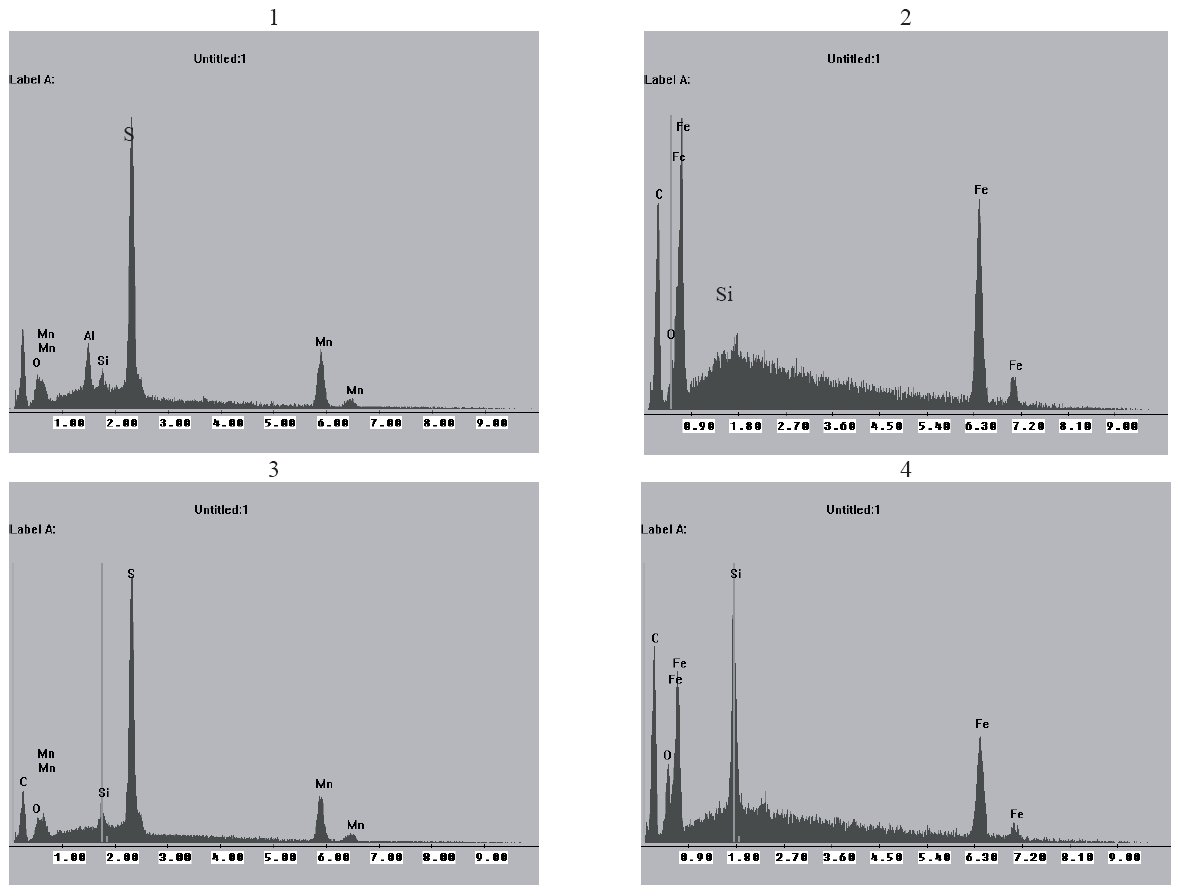
Alphabetical Index
Chemical Composition
Keyword Search
Named Inclusions
Steel Index
Exogenous Inclusions
Indigenous Inclusions
Macro Inclusions
Micro Inclusions
Nano Inclusions
Iron Oxide Inclusions
Nitride Inclusions
Oxide Inclusions
Phosphide Inclusions
Silicate Inclusions
Spinel Inclusions
Sulfide Inclusions
Refractory Inclusions
Slag Inclusions
Figure Browser
Help
Contact Us
Home
Complex inclusions in C-Mn-B steel

Figure 1: Inclusions in the sample neck (sample deformed at 900 C with strain rate 6.5s-1). SEM, scale bar: 10 µm.

Figure 1: The EDX spectra of inclusions showed in upper Fig., taken with 10 kV energy.
Inclusion name: Complex inclusion
Record No.: 862
Inclusion formula: No data
Inclusion type (Macro/Micro/Nano): Micro
Inclusion type (Exogenous/Indigenous): Indigenous
Inclusion classification: Sulfide, oxide
Inclusion composition in weight %: See the EDX spectra
Sample: C-Mn-B steel
Steel composition in weight %: 0.10% C, 0.47% Mn, 0.08% Si, 0.014% P, 0.023% S, 0.08% Cr, 0.05% NI, 0.17% Cu, 0.014% Mo, 0.009% Sn, 0.006% B, 0.009% N.
Note: Microstructure investigations after hot deformation carried out on the low carbon-manganese steel with addition of boron was presented in this work. The non-metallic inclusion influence on the microstructure and type of crack mechanism was shown.
In Fig. 1 the etched surface with long inclusions is shown. In Fig. 1 the whole inclusion is a complex of many elements like Al, Si, Ca, Mn, S which can create oxides and other
phases. They formed a very long inclusion ~24 µm length. The void around it is not much longer. The small voids on the surface used to contain inclusions but probably they were removed during polishing. All analyzed inclusions were bigger than 0.5 µm because of the size limitations of the beam in EDX analyses. To determine the chemical composition of inclusions smaller than 0.5 µm, TEM microscopy will be used in the future. Inclusions with bigger diameter than 1 µm occur in the structure in different places e.g.
inside the grains but also at the grain boundary. In the sample neck they are always inside voids, where the influence of deformation occurred.
Additional links: Not shown in this demo version.
Reference: Not shown in this demo version.